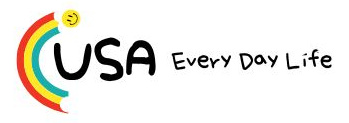As investors head into the end of the year, there’s an opportunity to lock in durable yields further out the curve, according to Vanguard. The Federal Reserve is expected to continue cutting rates, which will bring down yields on the front end. The central bank lowered rates in September by 25 basis points, or 0.25 percentage point. It meets again at the end of this month and futures markets are pricing in a 97% likelihood of another quarter-point cut, according to the CME FedWatch tool . At the same time, investors also need to balance potential positives and negatives in the economy, the money management firm said. “The labor market is realigning to a new normal and the impact from tariffs will build into 2026, presenting downside risks,” Sara Devereux, global head of Vanguard’s fixed income group, said in its quarterly update on Thursday. “However, positive growth drivers are on the horizon which should create a supportive economic environment for markets over the coming quarters,” she added. Vanguard estimates about a third of the new tariff impact has already passed through to consumers and expects around half to be reflected by year end. The remainder will come through next year, Devereux wrote. ‘Cautiously optimistic’ There are also high valuations in the fixed income market right now, Colleen Cunniffe, Vanguard’s head of global taxable credit research, told CNBC. Yet despite concerns about tariffs, inflation and the trajectory of the economy, corporate fundamentals are strong, she said. “Those are backward looking, but we don’t see any real signs in the consumer or in the labor market that would suggest that that would change anytime soon,” she said. Therefore, she’s “cautiously optimistic” on the fixed income market and focuses on security selection across the credit-quality spectrum. Pockets of opportunity Within investment-grade corporate bonds, Cunniffe is finding opportunities in good companies that have strong, predictable cash flows. However, she likes to look down the capital structure — in other words, bonds that have a lower priority for repayment. An example is utilities, she said. “You have cap-structure opportunities where you’re going to get a higher return within the same corporate structure, the same industry that we like, but find the opportunities that are a little bit more ‘yieldy’ in those spaces,” she explained. “With that kind of an approach, the portfolio can create some defense if we’re surprised or wrong on that ‘cautious optimism,'” Cunniffe noted. In addition, Vanguard said banks remain attractive in the investment-grade space, with strong asset quality and regulatory relief in sight. Plus, earnings have been coming in strong so far, Cunniffe added. She’s treading a bit more carefully in high-yield bonds and picking her spots when opportunities arise. While that market remains highly valued, it is also a better quality market these days than it has been historically, she said. For instance, with mergers and acquisitions picking up, there have been deals spun off from investment-grade companies. “Those tend to be attractive opportunities because you’re usually getting a business unit that’s just not strategic anymore for the bigger company, but it doesn’t mean there’s anything wrong with it,” she said. “They’re financing it in the high yield market … because they’re newer.” In addition, Vanguard has been adding exposure across structured products as a way to add extra income. That includes asset-backed securities and collateralized loan obligations. Lastly, emerging markets have provided some interesting opportunities, Cunniffe said. “The mid-quality area of that market is the most attractive to us,” she said. “We’re staying away from some of the lower-quality oil-exporter countries, for example.” For instance, Vanguard recently took advantage of recent debt issuance by Mexico, she said. (Learn the best 2026 strategies from inside the NYSE with Josh Brown and others at CNBC PRO Live. Tickets and info here .)





